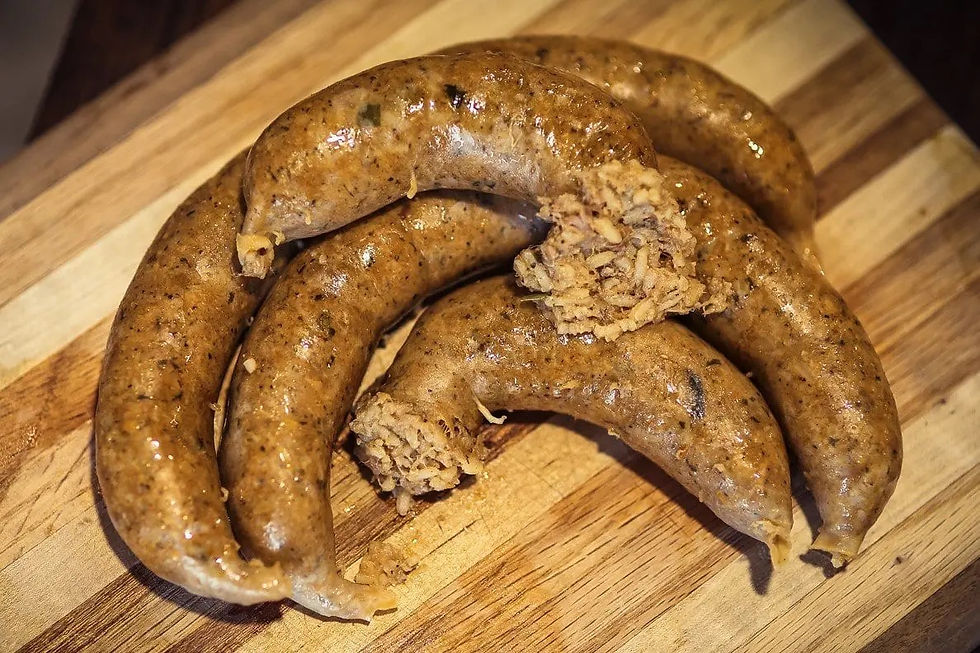The Story: Boudin
- Jeau Boudreaux
- Aug 3
- 2 min read
Updated: Aug 10

In South Louisiana, there’s a food that holds a place of honor not just on plates, but in hearts — boudin. Wrapped in a casing and steeped in history, boudin is more than just a sausage. It’s a symbol of resourcefulness, identity, and celebration in the Acadiana region.
From Old-World Roots to Bayou Rebirth
Boudin’s journey to Acadiana began centuries ago, across the Atlantic. French settlers, especially those from rural areas like Brittany and Normandy, brought with them the practice of making “boudin blanc” — a type of sausage made from pork and rice. After the Acadians were exiled from Canada in the mid-1700s and made their way to South Louisiana, they adapted those traditions to the ingredients, climate, and needs of their new home.
Louisiana’s rich rice fields, fertile land, and hog-raising culture created the perfect setting. Here, the French-Canadian boudin took on a new life — becoming a portable, protein-packed snack flavored by the Cajun palate and made for sharing at gatherings, family tables, and roadside stops.
What Exactly is Boudin?
To the uninitiated, boudin can be confusing. Is it sausage? Is it stuffing? Is it finger food? In Acadiana, the answer is: yes, all of the above.
Classic boudin is a steamed sausage made of cooked pork, liver, rice, onions, and spices, all ground and packed into a natural casing. It’s soft and savory, and most people squeeze it straight from the casing into their mouth or eat it with crackers, pickles, and hot sauce.
Over the years, variations have emerged — boudin balls (deep-fried versions rolled in breadcrumbs), seafood boudin(with shrimp or crawfish), and even smoked boudin, giving it an added layer of flavor.

A Food of the People
What makes boudin so special in Acadiana is how deeply tied it is to the people. It’s a food of survival and creativity— born from the “boucherie,” a communal hog butchering that once marked rural Cajun life. Every part of the pig was used, nothing wasted. Boudin became the practical result of that philosophy — a way to feed a family, stretch resources, and celebrate community.
Over time, these family recipes were passed down, adapted, and perfected. Every small-town grocery store, gas station, and meat market now has its own version — fiercely guarded and proudly served.
A Culinary Trail All Its Own
Today, boudin is so integral to Acadiana’s food identity that it has its own route: The Cajun Boudin Trail. From Scott (dubbed the “Boudin Capital of the World”) to Eunice, Opelousas, and Broussard, travelers can follow the trail to sample dozens of styles.
Locals know where to find the best links — Billy’s, Don’s, Best Stop, T-Boy’s, Poches, Kartchner’s, and Johnson’s Boucanière, to name a few — and they’ll argue about it like it’s SEC football.
More Than Food — It’s Heritage
Boudin is a cultural icon. You’ll find it at tailgates, festivals, weddings, and lunch breaks. It’s sold by the link, by the pound, and by the family story. It carries with it the history of the Cajun people — their resilience, hospitality, and ingenuity.
To eat boudin is to participate in that history — one bite at a time.





Comments